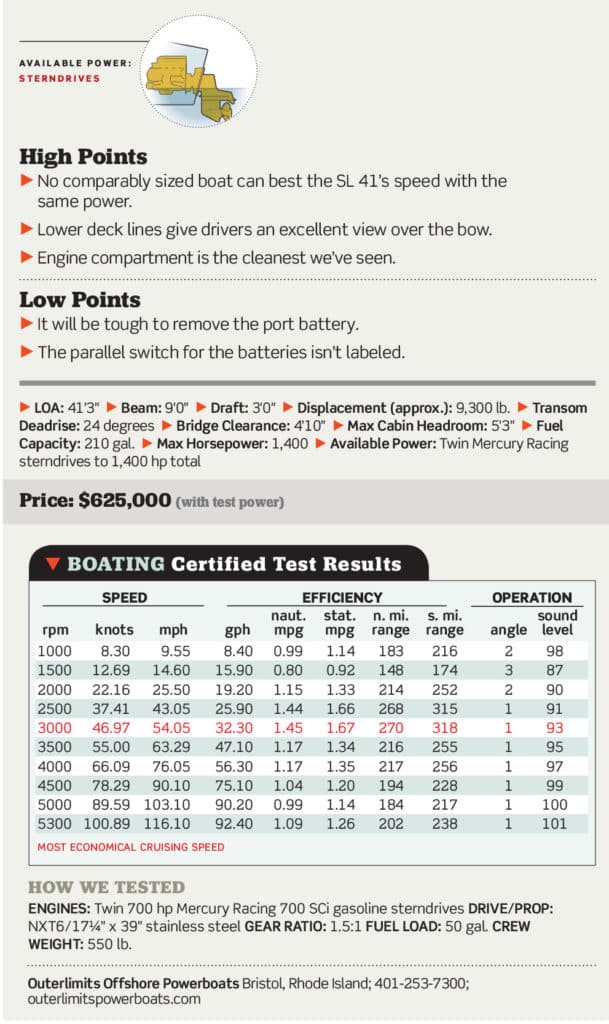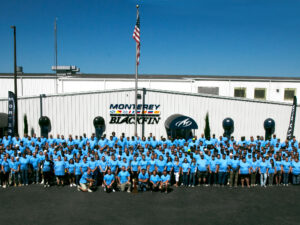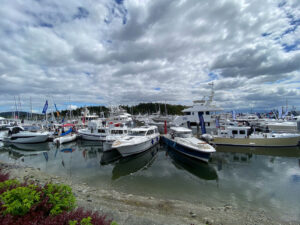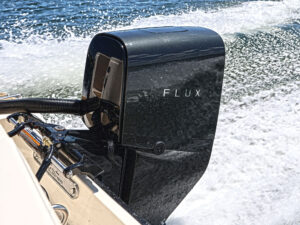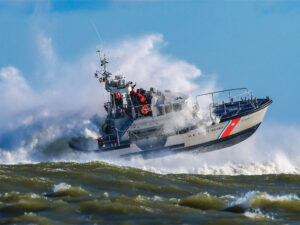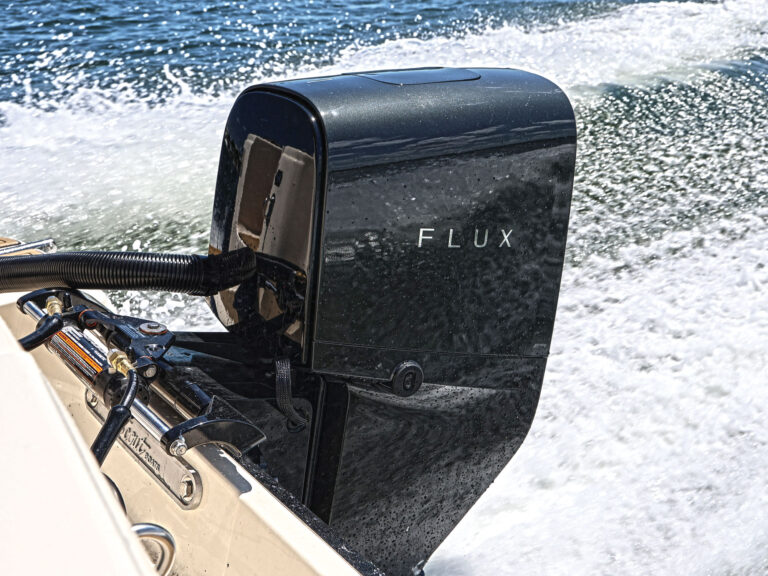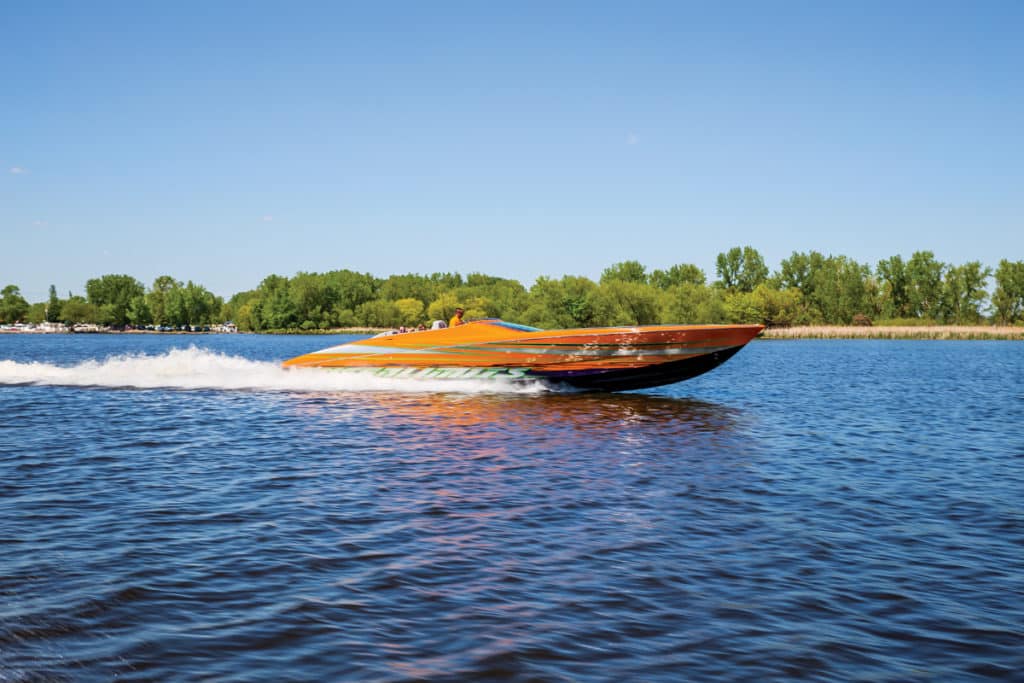
Beam: 9’0″
Draft: 3’0″
Displacement (approx.): 9,300 lb.
Transom Deadrise: 24 degrees
Bridge Clearance: 4’10”
Max Cabin Headroom: 5’3″
Fuel Capacity: 210 gal.
Max Horsepower: 1,400
Available Power: Twin Mercury Racing sterndrives to 1,400 hp total
More Information: outerlimitspowerboats.com
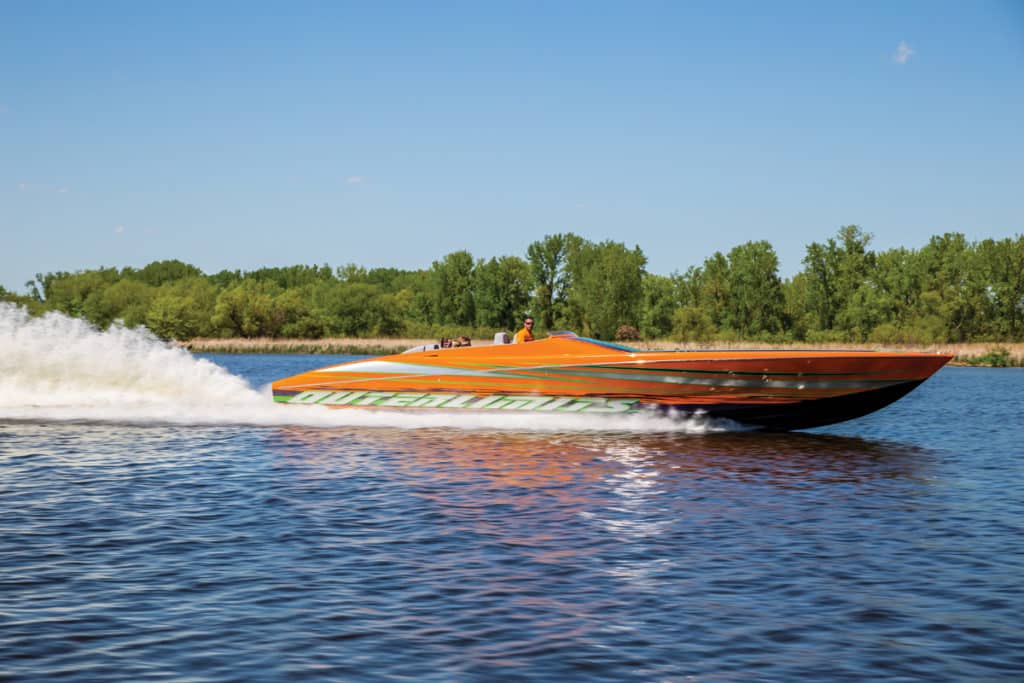
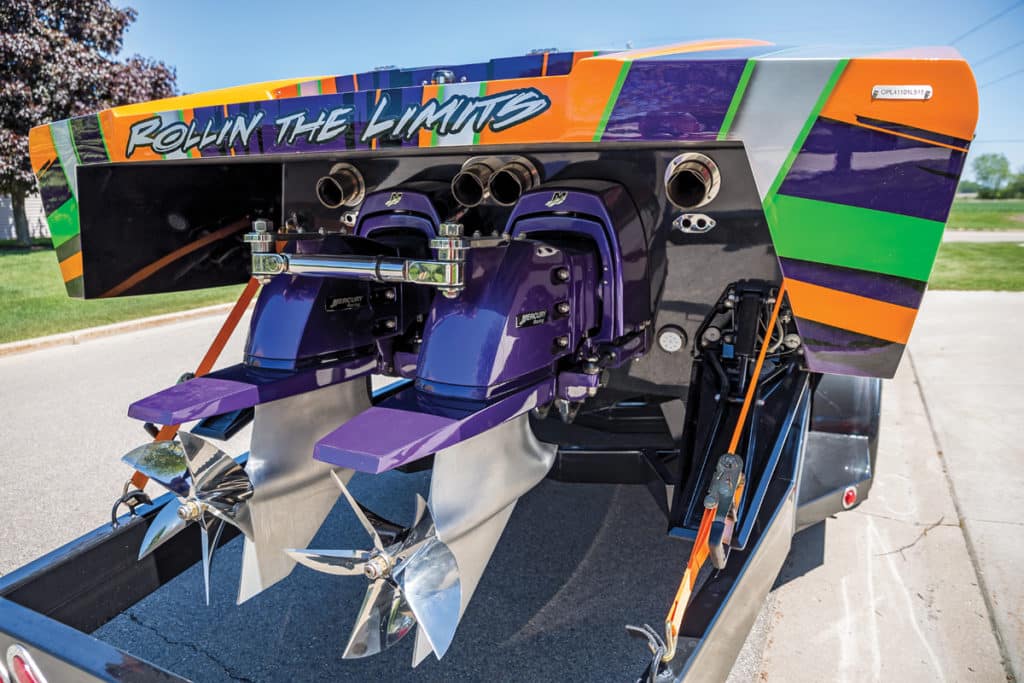
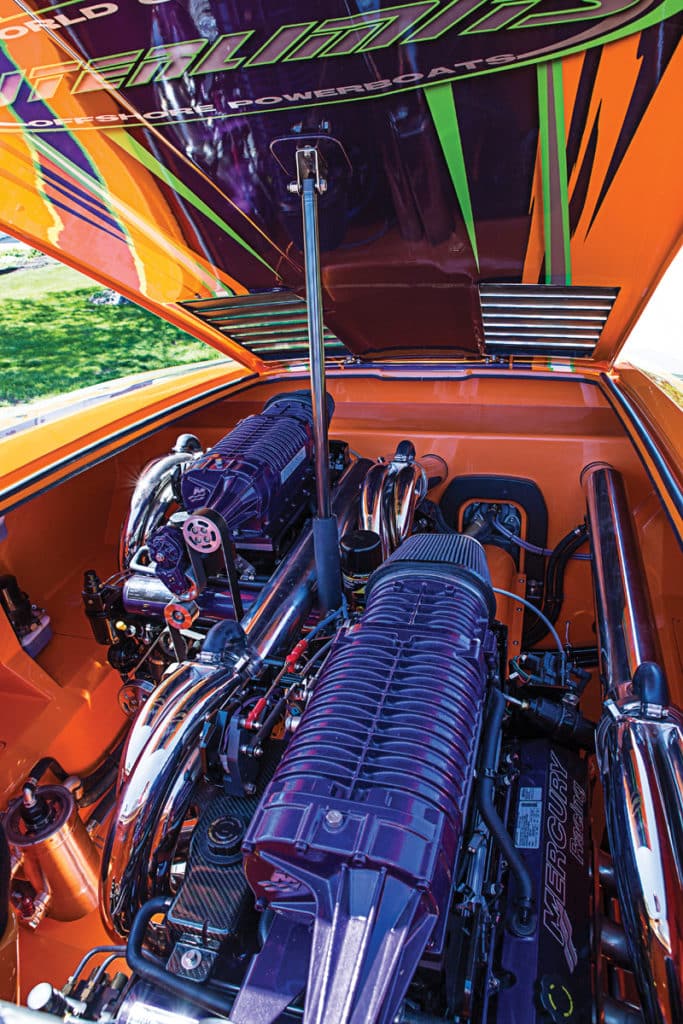
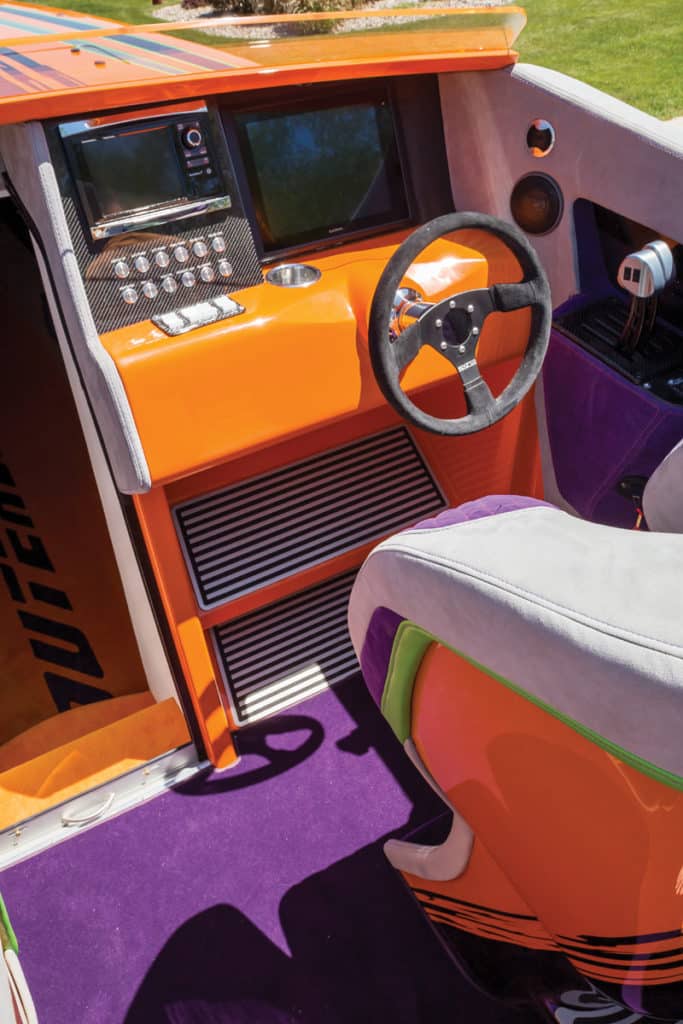
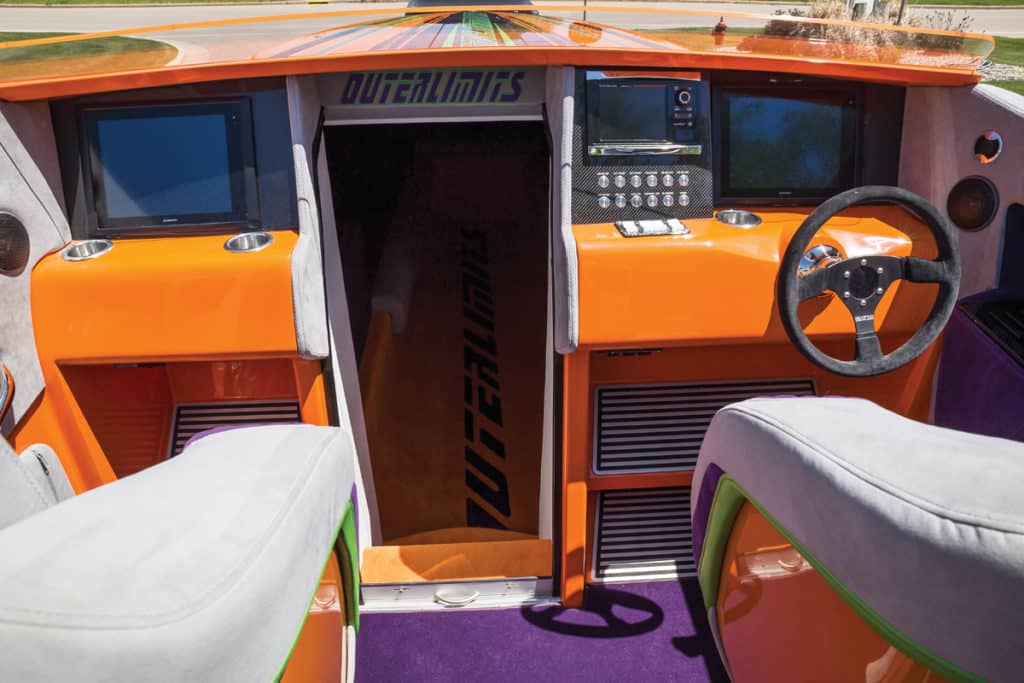
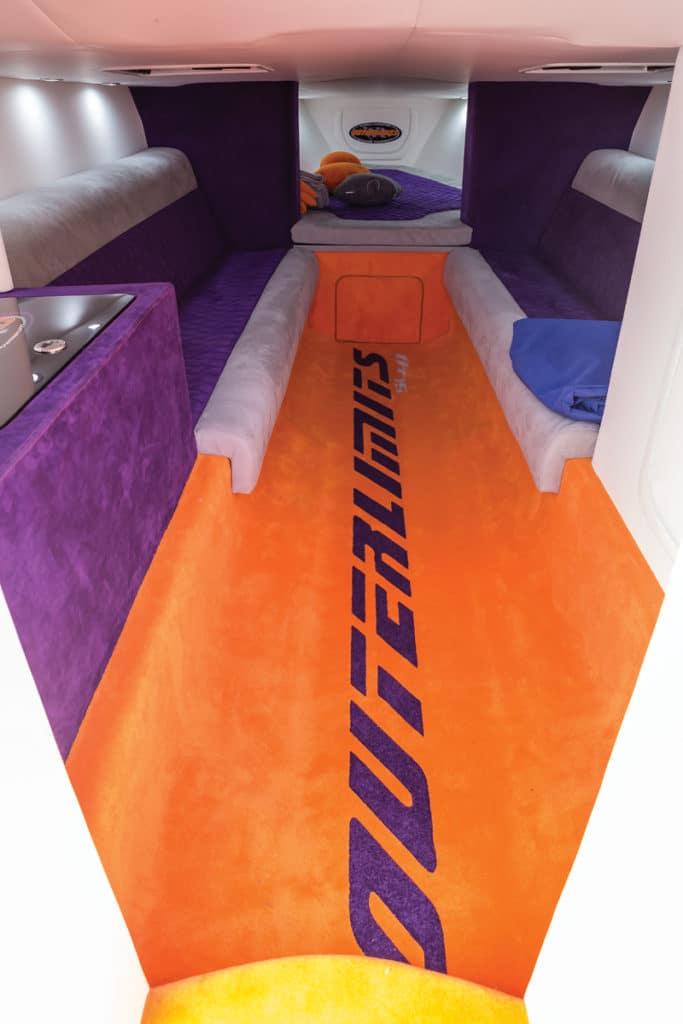
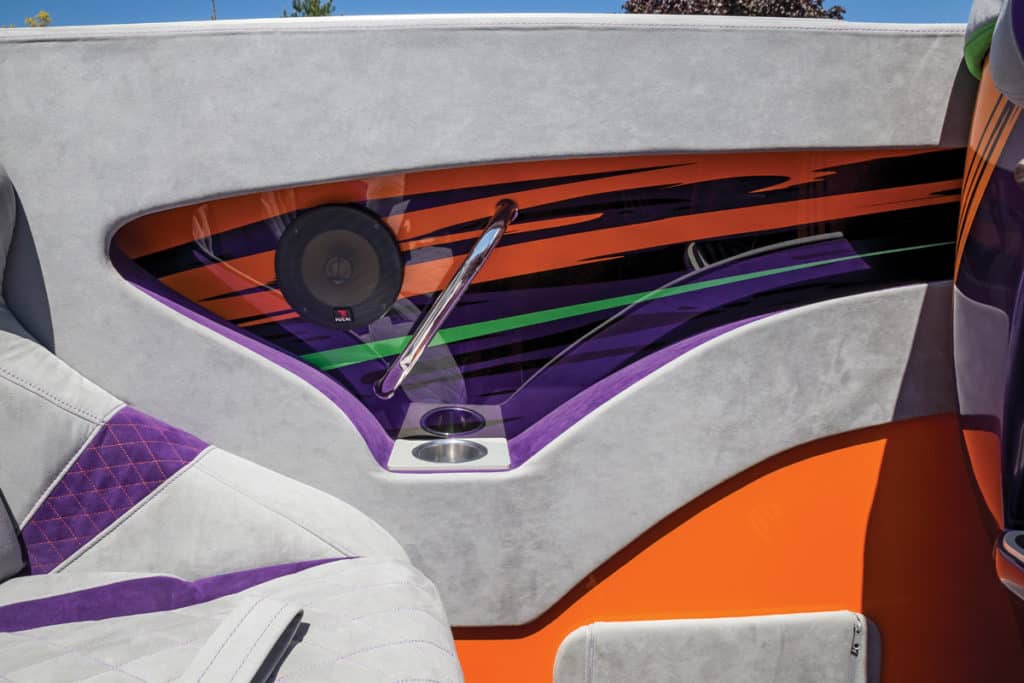
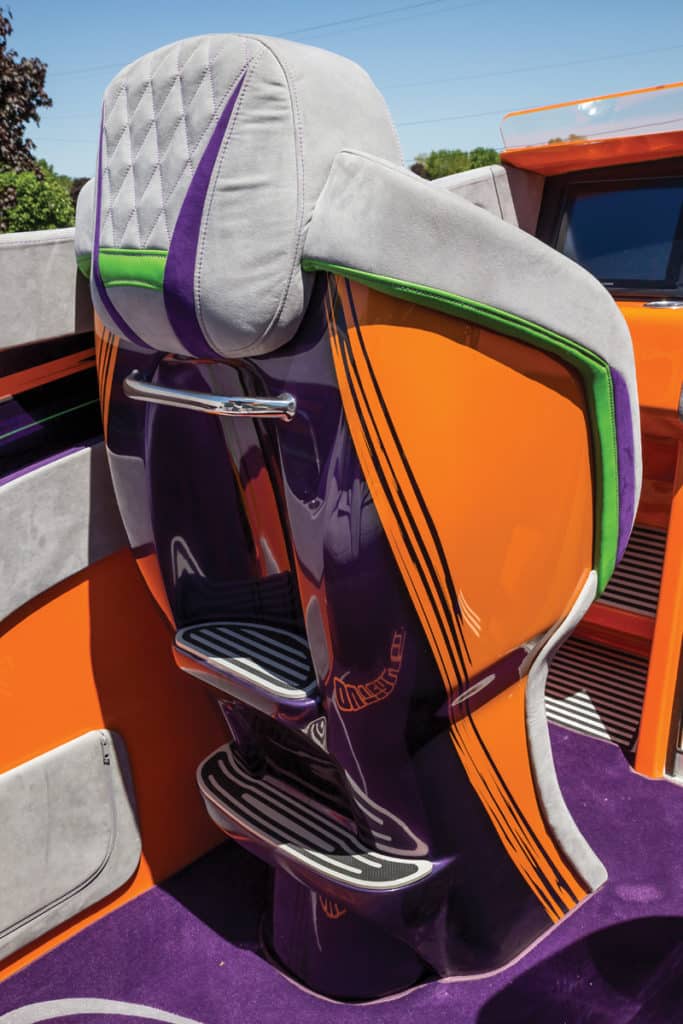
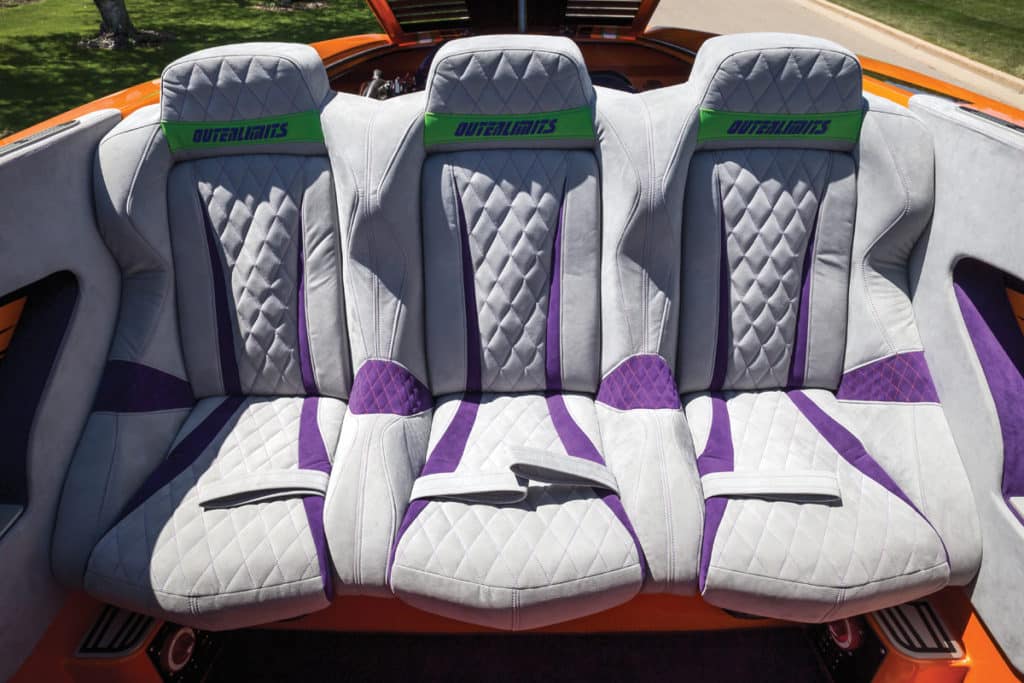
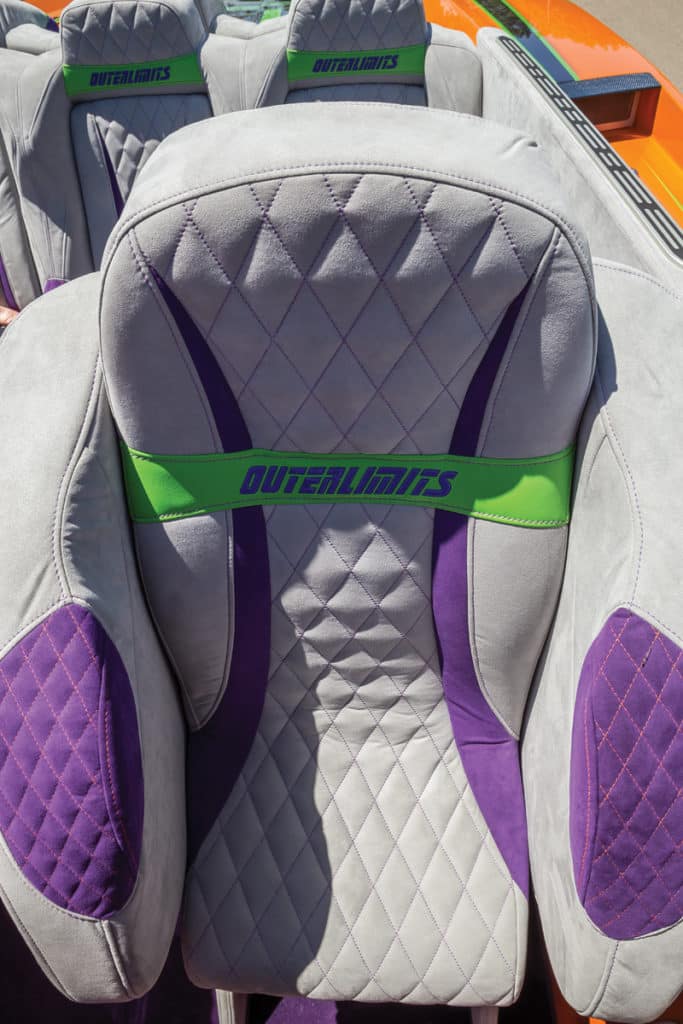
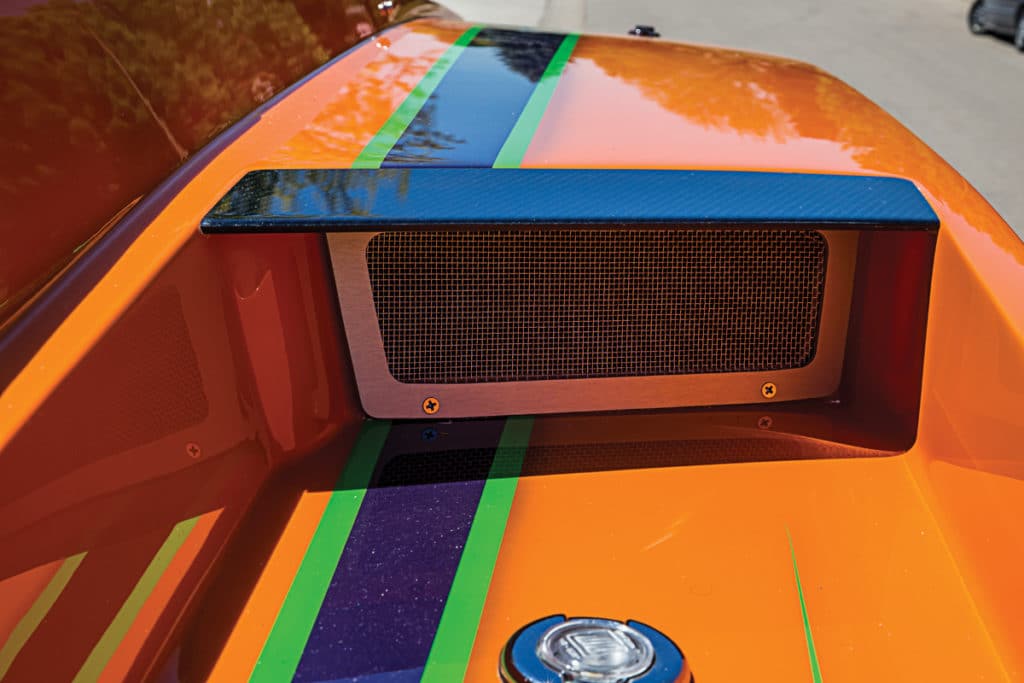
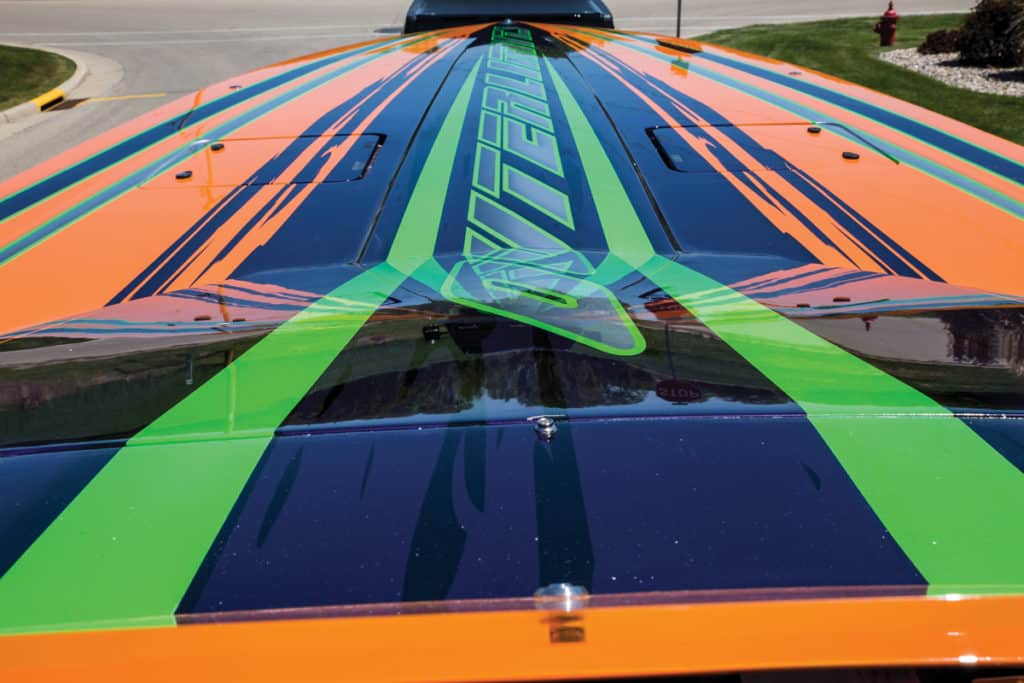
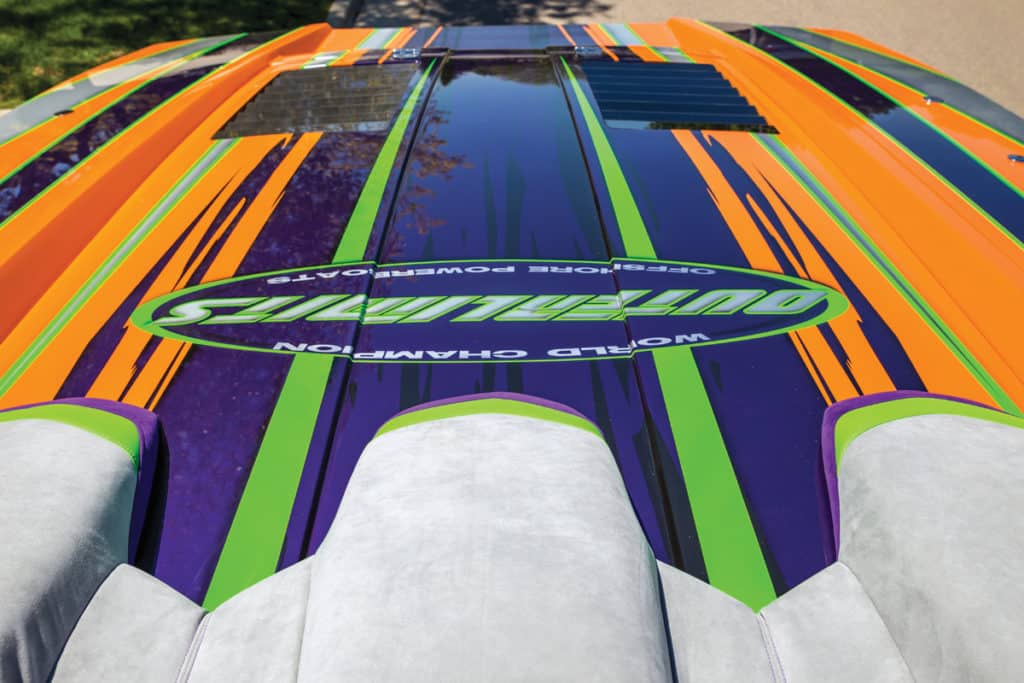
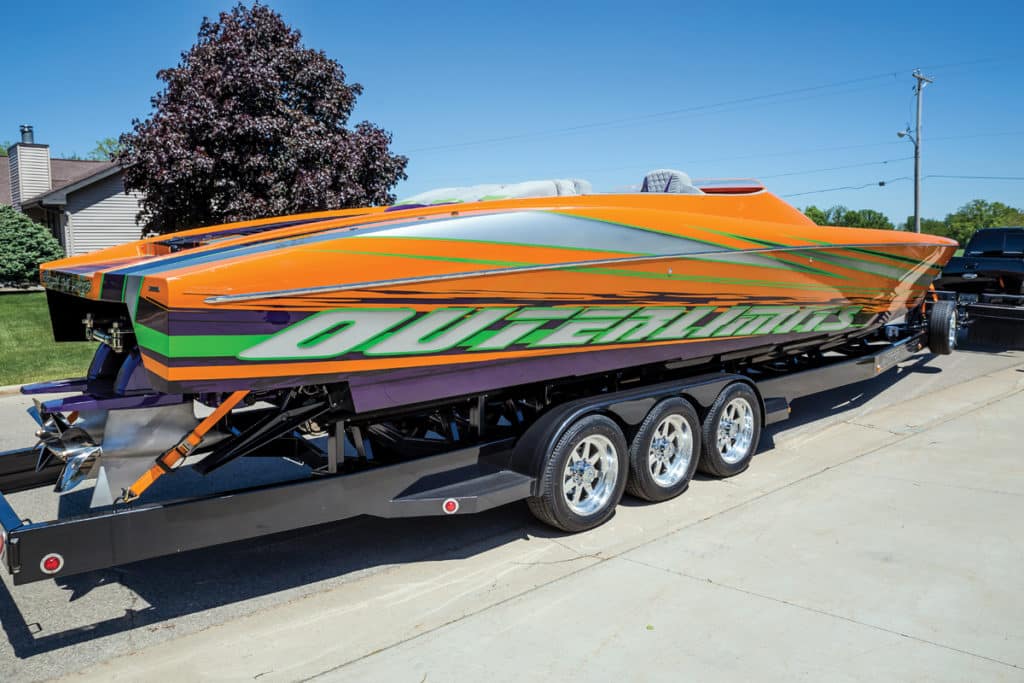
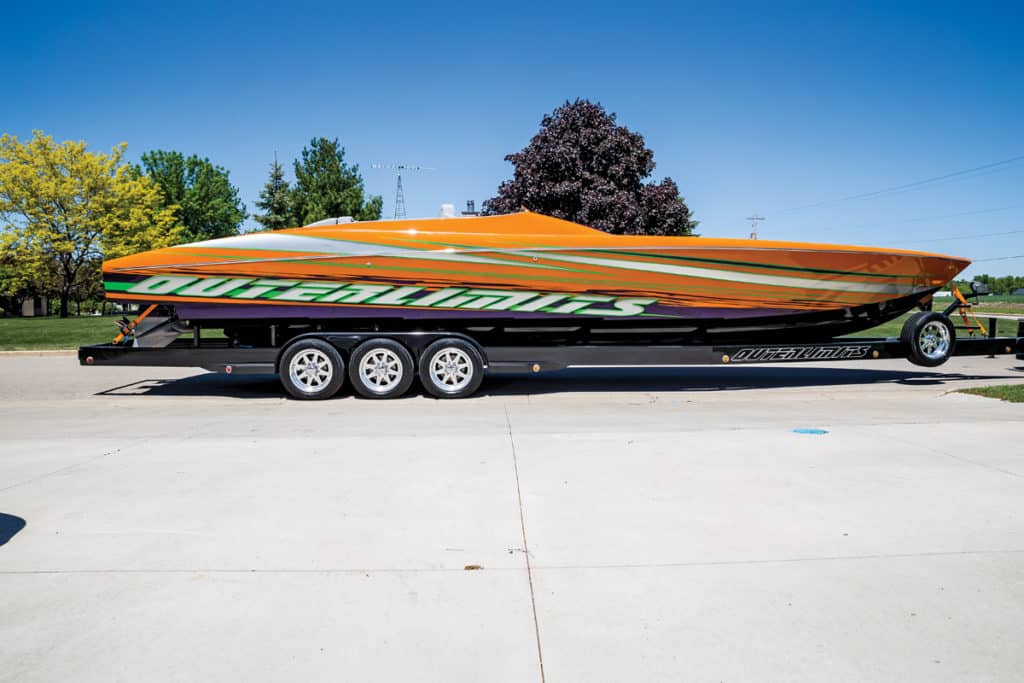
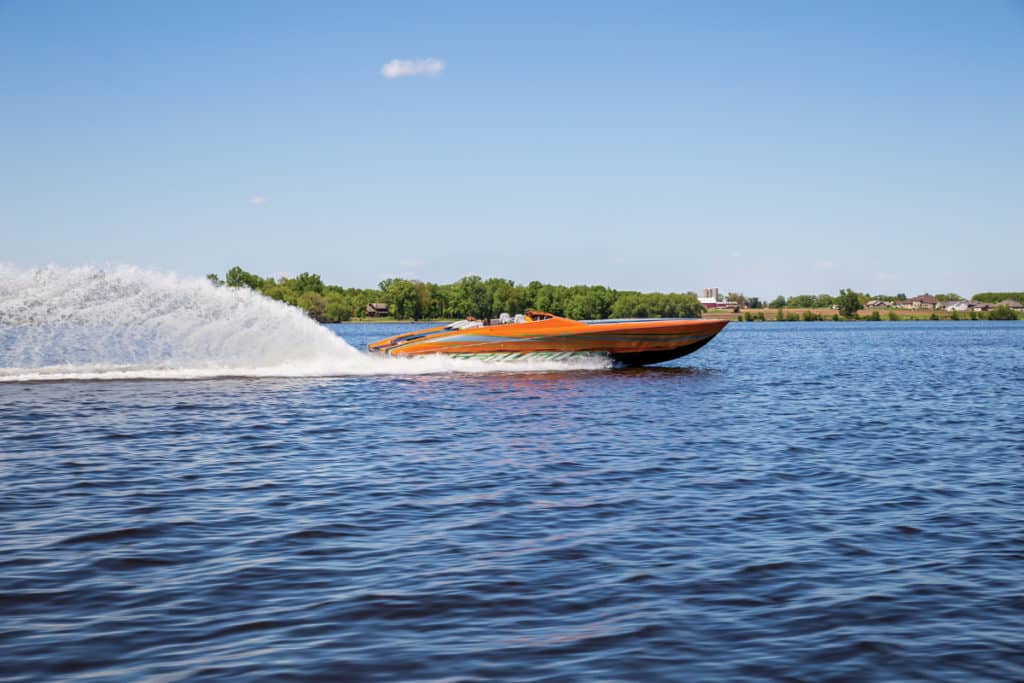
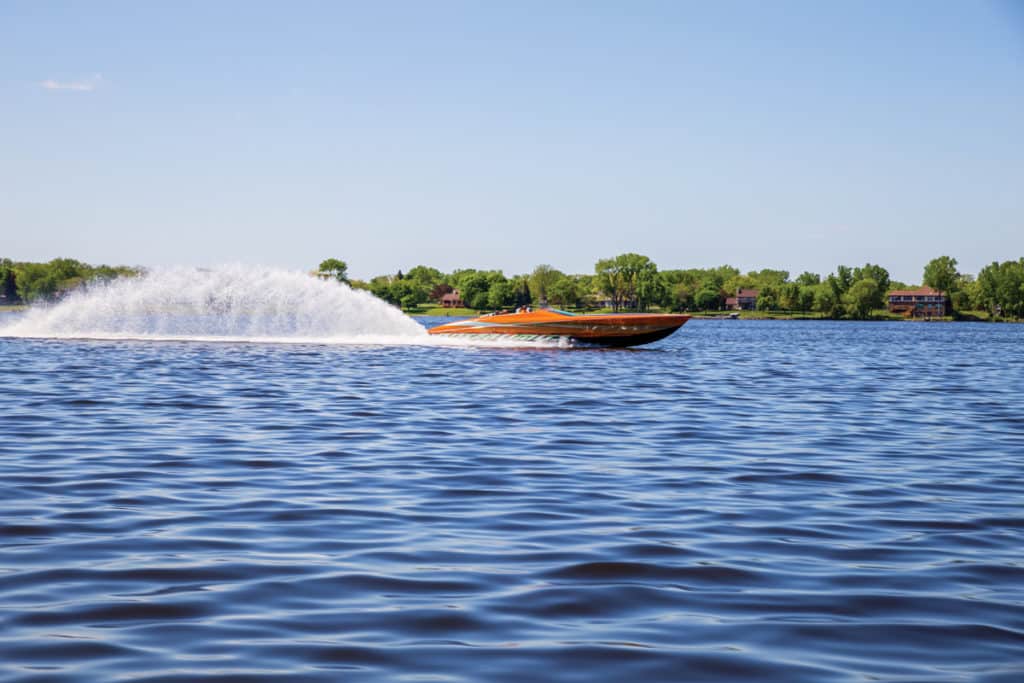
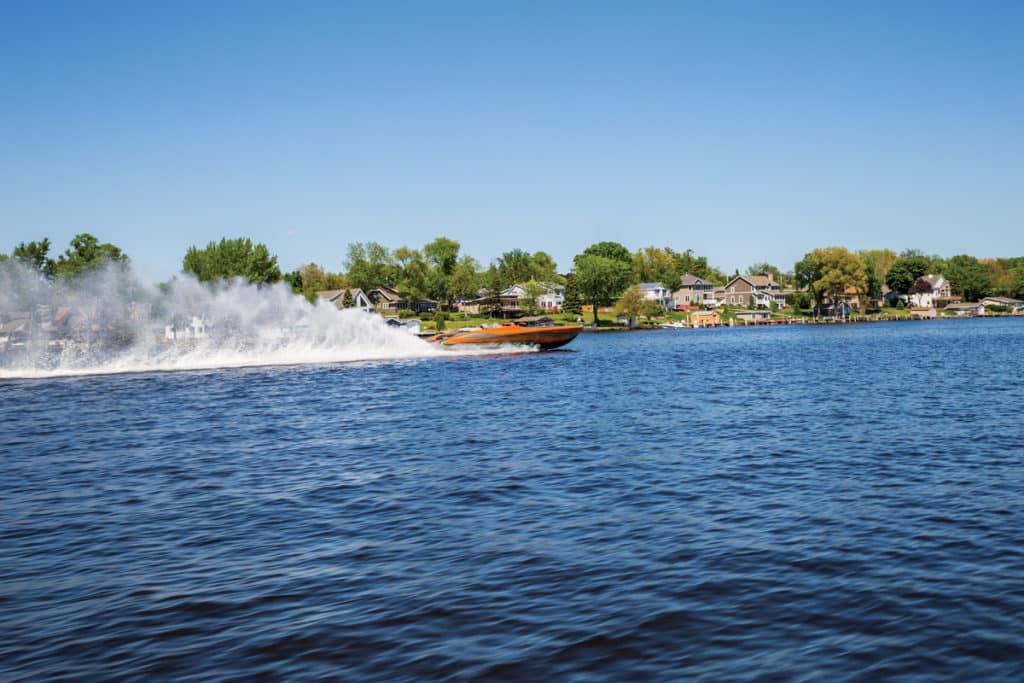
While examining the transom of the Outerlimits SL 41 before our sea trial, we noticed that the Mercury Racing 380S K-Plane trim tabs were installed horizontally rather than parallel with the V-shape of the boat’s bottom.
In the go-fast world, riggers and throttle men have long argued the merits of having the tabs in this position because it requires less tab adjustment to affect the boat’s attitude. Lower a single tab a couple of degrees to counter a crosswind or quartering wind or similar seas. Drop them both to keep more of the boat in the water in rough, head-on seas. Typically, performance-boat manufacturers didn’t install tabs this way because they didn’t want less-experienced drivers to get in trouble by using too much tab, especially with today’s stepped bottom designs.
However, Outerlimits owners are not rookies. They know that, when it comes to applying tabs on a stepped hull running faster than 100 mph, a little goes a long way. That’s what we found when we ran the SL 41 powered by staggered Mercury Racing 700 SCi engines with NXT6 drives. Testing in strong crosswinds put the trim-tab theory to a good test. Lowering a tab to counter the crosswinds leveled the boat, and we ran 114 mph. A new element on the SL 41’s five-step bottom is a small pad in the running surface at the stern. Outerlimits found that the pad generated so much lift that the boat ran better with a 1-inch spacer in the drives to put the props a little deeper in the water. Other bottom-design updates on the SL 41 came from what Outerlimits learned when it set the reigning V-bottom kilo speed record at 180.470 mph on the Pamlico River in North Carolina in April 2014. The large air intakes at the chines have been removed, and the angle of the steps from the chine to the keel isn’t as pronounced. The overall design provides more even lift across the running surface to keep the boat riding level.
Our top speed is about 10 mph faster than you can expect from Nor-Tech’s 427 ($620,000 with the same power). Credit for some of that edge can go to the weight saved by Outerlimits’ construction methods, which use epoxy resin, E-glass, and carbon and Kevlar reinforcement. Each piece of treated hull and deck reinforcing fabric and coring is laid in the mold and vacuum-bagged to eliminate air and excess resin, which could weaken the lightweight epoxy construction. Parts are then cured in an autoclave — a computer-controlled oven — for two days. The stringers and transom are cored with composite Penske boards. Other manufacturers use similar materials, but Outerlimits is the only one to cure the boat in an autoclave to get the optimum combination of strength and weight.
Another change came in the deck design of the SL 41. Outerlimits buyers haven’t been asking for boats with substantial cabin headroom, so the SL 41 has a low, flat deck much like those of classic V-bottoms from the 1970s and 1980s. The deck slopes up at the helm to keep air off the passengers, and for a 5-foot-8-inch-tall guy like me, the view over the bow is excellent.
While the deck is old school, the helm screams modern high-tech. There are no individual instruments. Everything displays on the Mercury Racing VesselView 7 screen and twin Garmin 8212 multifunction displays (with GPS and chart plotting, of course). Keyless ignition powers up the engines, and the throttle levers have integrated trim buttons for the drives and tabs.
Even with the low-profile deck, the cockpit has 45 inches of depth. The driver and co-pilot travel in stand-up bolsters with fixed bottom cushions. Ahead are two footrests, so you can sit by using the higher one and lean with the lower one. Four individual buckets with hold-down straps comprise the bench seat. Battery switches are beneath the cockpit steps, and there’s stowage in the gunwales and in a zippered compartment next to the co-pilot’s bolster. Aft in the engine compartment, the two 700 SCis are in a staggered installation with the port motor forward. All the rigging is hidden beneath the one-piece compartment liner, and there are removable panels to access the batteries and engine-mount backing bolts.
A roll-up aluminum door protects the cabin entry. Aft, and to port, are a large locker with a zippered cover and a drop-in cooler with a hatch that opens on a gas strut. Across to starboard, where most people would expect to find the head, is another large locker that unzips to reveal the stereo amplifiers. The portable head is forward beneath the V-berth: Push a button and it slides out on stainless-steel tracks. There’s good sitting headroom on the facing berths and space for two adults to relax on the V-berth. Lockers in the partial bulkheads between the berth and lounges have the opening on the forward side. If the hatch is on the aft side, when the boat is run in rough water those hatches won’t stay closed and the locker contents will be on the cabin floor. By putting the hatches on the front side, they stay closed and the contents stay put. Like the trim-tab installation, this small detail shows that the team at Outerlimits knows what it’s doing.
Comparable Model: Nor-Tech 427
